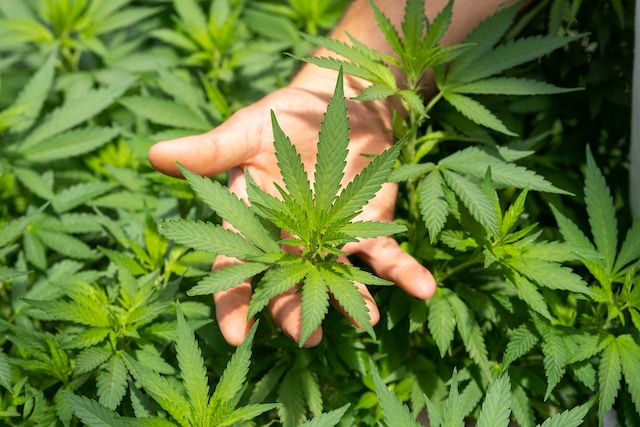Did you know that hemp, a versatile plant with various applications, has a surprisingly positive impact on the environment? From reducing carbon emissions to requiring minimal water and pesticide use, hemp is proving to be a sustainable and eco-friendly alternative to many traditional industries. In this article, we will explore the different ways hemp contributes to environmental preservation, highlighting its potential to revolutionize various sectors and pave the way for a greener future. Decoding Hemp’s Environmental Impact is your key to understanding the significant role this remarkable plant plays in mitigating climate change and promoting sustainability.
Decoding Hemp’s Environmental Impact
Hemp, a versatile and fast-growing plant, has gained significant attention in recent years for its potential impact on the environment. As researchers and environmentalists delve deeper into the subject, it becomes increasingly clear that understanding hemp’s environmental impact is crucial for sustainable and responsible cultivation. In this comprehensive article, we will explore various aspects of hemp’s relationship with the environment, including its carbon footprint, water usage, pesticide impact, role in soil health, biodiversity benefits, and potential as a sustainable material.

Understanding Hemp’s Carbon Footprint
When it comes to carbon emissions, hemp stands out as a responsible choice. Unlike many other crops, hemp actually absorbs more carbon dioxide from the atmosphere than it emits during its growth cycle. Through a process known as carbon sequestration, hemp plants capture and store carbon, thus mitigating the greenhouse effect and contributing to climate change mitigation. This remarkable attribute makes hemp a valuable tool in combatting the detrimental effects of carbon emissions.
Examining Hemp’s Water Usage
Water scarcity is a global concern, making it crucial to assess the water requirements of different crops. Hemp has the advantage of being a drought-tolerant plant, requiring significantly less water compared to other major crops like cotton. Additionally, hemp can thrive in a variety of soil conditions, reducing the need for excessive irrigation. By choosing hemp as a sustainable alternative, you can help conserve water resources and contribute to a more sustainable future.
The Impact of Pesticides on Hemp Cultivation
The use of pesticides in agriculture is a major concern due to their harmful effects on human health and the environment. Thankfully, hemp has shown promising resistance to pests, making it a relatively low-maintenance crop. Hemp cultivators can minimize pesticide use and adopt organic farming practices, thereby reducing the negative impact on ecosystems and safeguarding the health of both farmers and consumers. By supporting pesticide-free hemp cultivation, you are actively promoting a safer and more sustainable agricultural system.
The Role of Hemp in Soil Health
Soil degradation is a pressing issue worldwide, with chemical-intensive agriculture being a major contributor. However, hemp cultivation can help restore soil health. Hemp has a deep root system that improves soil structure and promotes nutrient absorption. Additionally, it acts as a natural weed suppressor, reducing the need for chemical herbicides. By cultivating hemp, farmers can minimize soil erosion, enhance soil fertility, and contribute to the preservation of precious arable land.

Exploring Hemp’s Biodiversity Benefits
Biodiversity loss is an alarming global crisis, with profound implications for ecosystems and the services they provide. Hemp cultivation presents an opportunity to reverse this trend. Hemp fields provide habitat for a variety of beneficial insects, such as bees and butterflies, which contribute to pollination and the overall health of ecosystems. By integrating hemp into our agricultural practices, we can support biodiversity conservation and protect the delicate balance of our natural ecosystems.
Evaluating Hemp’s Potential as a Sustainable Material
Hemp’s potential as a sustainable material extends far beyond its environmental attributes. Hemp fibers are exceptionally durable and versatile, making them suitable for a wide range of applications, including textiles, construction materials, and even biodegradable plastics. By choosing hemp-based products, you actively support a shift away from resource-intensive and polluting materials, moving towards a more sustainable and circular economy.

The Eco-Friendliness of Hemp-Based Products
The production of conventional materials, such as cotton and synthetic fibers, often involves harmful chemicals and enormous amounts of water and energy. In contrast, hemp-based products have a significantly lower environmental impact. Hemp cultivation requires less water and is generally grown without the use of harsh chemicals. Furthermore, hemp products can be recycled and are biodegradable, reducing waste and pollution. Making the switch to hemp-based products can significantly contribute to a greener future.
Hemp’s Role in Carbon Sequestration
Aside from its carbon sequestration capabilities during growth, hemp also has potential as a sustainable source of biofuels and biochar. Biofuels derived from hemp can be a viable alternative to fossil fuels, reducing carbon emissions and promoting energy independence. Additionally, hemp biomass can be converted into biochar, a stable form of carbon that can be used to improve soil fertility and sequester carbon for extended periods. Exploring and investing in these innovative applications can maximize hemp’s potential in mitigating climate change.
The Water Efficiency of Hemp Fibers
Water scarcity and excessive water consumption in the fashion industry are pressing concerns. Thankfully, hemp fibers offer a more water-efficient alternative. Compared to cotton, hemp requires significantly less water during cultivation, reducing the strain on water resources and minimizing the ecological impact. By embracing hemp as a sustainable textile option, we can alleviate the water footprint associated with the fashion industry and move towards responsible consumption and production.
The Impact of Hemp Farming on Local Ecosystems
Hemp cultivation provides a range of positive impacts on local ecosystems. As a fast-growing plant, hemp can outcompete and suppress weeds, reducing the need for herbicides. Moreover, hemp’s deep root system helps prevent soil erosion and improves water infiltration, reducing runoff and the associated risk of water pollution. By incorporating hemp into crop rotations, farmers can benefit from its regenerative properties and promote the health and resilience of local ecosystems.
In conclusion, hemp’s environmental impact is multi-faceted and deserves careful consideration. From its carbon sequestration abilities and low water requirements to its potential as a sustainable material and positive impact on biodiversity, hemp presents a compelling case for a greener future. By choosing hemp-based products and supporting responsible cultivation methods, you can actively contribute to a more sustainable and ecologically conscious society. Together, let us decode hemp’s environmental impact and unlock its full potential for a healthier planet.












